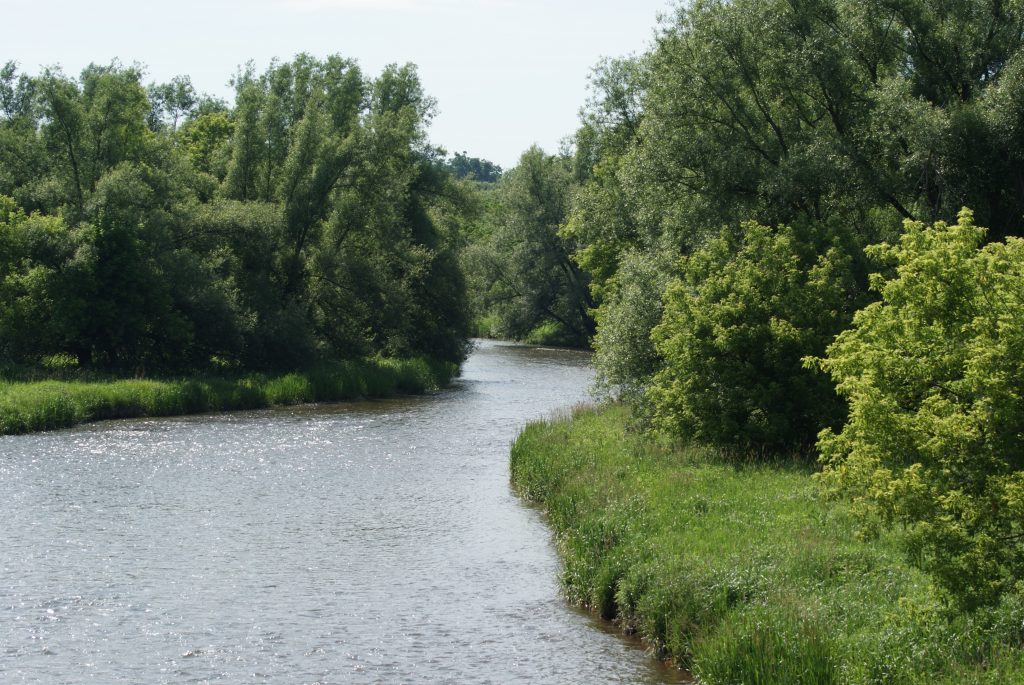Dumb growth has left us with endless subdivisions, never-ending highways and municipal debts. It has degraded our water, damaged our health and paved over some of our best farmland.
Some want to keep this outdated model. But many leaders in our communities know that if we don’t change our approach to growth, we risk our health, our economy and our climate.
As our new report, From Dumb Growth to Smart Growth: Actions to strengthen the Greenbelt and the Growth Plan, shows it’s time to say goodbye to dumb growth. The good news is there is a smarter way to grow in Ontario. We can build walkable, transit friendly communities that are better for our environment, health and wallets. You can help: Take action here to show you support smart growth in Ontario.
A blueprint for smarter growth
The Greenbelt Plan and Growth Plan for the Greater Golden Horseshoe provide a blueprint for smarter growth. These plans work together to stop sprawl, protect our farmland and forests while encouraging more efficient cities and towns, with vibrant neighbourhoods that more of us want to call home.
The Greenbelt Plan along with the Niagara Escarpment Plan and the Oak Ridges Moraine Conservation Plan protect our water sources, natural areas and farmland from sprawl. The Growth Plan directs growth to urban areas in order to create more compact complete communities. (Complete communities provide access to jobs, housing options, health services, education, recreation, natural areas and transit options.) The Growth Plan impacts a large diverse area called the Greater Golden Horseshoe (GGH) which runs from Peterborough, north to Orillia, west to Waterloo and south to Niagara Falls.
These plans are now under review by the provincial government. It’s the first review since the plans were introduced and it’s a chance to improve them.
If these plans are properly implemented, you’ll see small towns reinvigorated with more mid-rise developments located near rapid transit hubs. In our cities, empty industrial areas and parking lots will be replaced by new mixed use developments, adding density and vitality. By directing growth to our urban areas we reduce the cost of development and support the protection of the countryside so hamlets can stay hamlets and farmers can keep farming.
It’s important to note that these are long term plans. With a planning horizon of 2041, it will take a generation before these plans are fully implemented. But for the sake of our future, we‘d better get it right now.
Without the Greenbelt, we would have lost a quarter million acres of farmland to sprawl by 2031. Yet the Greenbelt covers only 21 per cent of the GGH, leaving thousands of acres of agricultural land vulnerable. Farmland is essential to our economy. The agri-food sector in the Greater Golden Horseshoe contributes $12.3 billion to Ontario’s economy. When we pave over farmland, it damages our economy.
The Growth Plan directs municipalities to grow up and in, instead of sprawling over farmland. The Growth Plan directs 40 per cent of new growth to existing built up urban areas with the remaining 60 per cent of growth on greenfield sites. But, as shown in a recent Neptis Foundation report, many municipalities aren’t meeting these intensification targets despite the fact that there is more than enough land already allocated for generations of growth. Since there is an excess land supply, we think it’s a good idea to freeze urban boundaries for the next 10 years to ensure municipalities build up, not out.
What does smarter growth look like?
Smarter growth – or intensification – doesn’t mean 50-storey condos. In smaller towns, intensification looks like reinvigorated Main Streets – three-storey buildings with retail and office space below and apartments or offices above. In towns and small cities intensification means mid-rise buildings of five to six stories near transit hubs. These kinds of developments can infuse a block with energy when a mix of stores and restaurants are at street level. In larger cities, it means 10 to 12 storey buildings with a mix of retail, residential and offices along streets. Higher densities make public investment in services and amenities feasible, like complete streets with bike lanes and rapid transit systems.
How do we all benefit from smarter growth?
There are many reasons why compact growth is better for residents. We’ve put together this clickable infographic all about the benefits. But in the meantime, here’s a quick summary:
- Growing efficiently is better for municipal finances and saves taxpayers money.
- Smarter communities have a lower carbon footprint than sprawl subdivisions.
- Living in a walkable community is better for our health because it means more opportunities for daily exercise.
- Smarter growth makes investment in transit feasible, enabling more of us to move across the region faster.
- Building up, instead of out revitalizes our main streets by providing a diversity of housing and employment options.
- Compact growth preserves more farmland, forests and natural areas.
It’s clear the Greater Golden Horseshoe region will continue to grow. The question is how we grow. We think the region needs to grow in smarter ways. That’s why recommend the following actions to strengthen the Greenbelt Plan and the Growth Plan:
- Support efficient growth in urban growth centres by enforcing or increasing targets for intensification while aligning growth with existing water, road, transit and sewer capacity in towns and villages outside of the urban growth centres.
- Address climate change by putting a meaningful price on carbon that will reduce our emissions, create a fund for public transit and provide incentives for energy efficient buildings and green infrastructure.
- Expand the Greenbelt to include additional prime agricultural land and natural heritage systems and ensure complete mapping of these systems for the entire Greater Golden Horseshoe.
- Place a moratorium on the expansion of urban boundaries. There is more than enough land set aside by municipalities to accommodate the growth forecasted population for the Greater Golden Horseshoe beyond 2031. We don’t need to keep sprawling over our farmland.
- Better align the Growth Plan with the Big Move transit plan objectives permitting higher densities within 2 km of transit hubs in urban growth centres and provide multiple ways to access transit hubs, including cycling, walking and driving.
- Foster healthy communities by requiring active transportation plans in urban growth centres.
- Improve the flow of people and goods across the region by prioritizing investment in transit, rail, and existing highways over new highways so that the transportation network will better serve and reinforce smart growth rather than sprawl.
Do you agree it’s time Ontario said goodbye to dumb growth? Make your voice heard at ChooseSmartGrowth.ca







